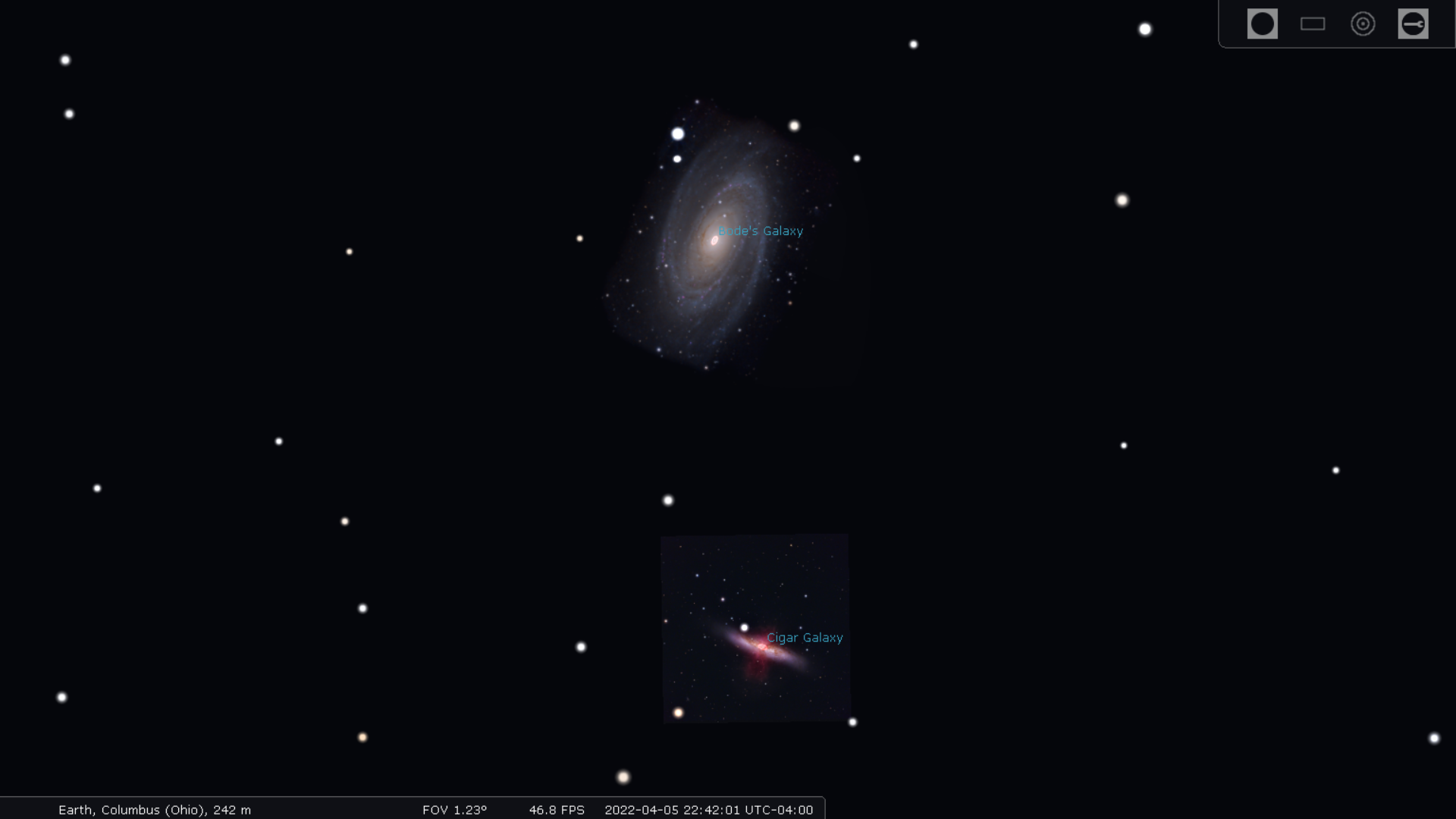Jared May: What's Up April 5 - April 12, 2022
We have finally made it to April and the warm spring weather is at our doorsteps. This week the daytime temperatures fluctuate between the 40s and 60s, while the nighttime temperatures will stick between the 30s and 40s. The pesky clouds will be lingering around for most of the next seven days or so, but there is a chance for some partially clear skies closer to Saturday and Sunday. Sunset will be just after 8 PM, so be ready with your telescopes, binoculars, and lawn chairs by 9 PM when the sky gets really dark to maximize your stargazing time.
This week be on the lookout for the growing waxing moon, a planetary conjunction, two interacting galaxies, and a famous open cluster of stars. I will also include a short section on a recent Hubble Space Telescope (HST) discovery – the most distant star yet observed.
If you enjoy watching sunsets, you have probably noticed the thin waxing crescent moon hanging low in the western sky around 6 or 7 PM. As the week progresses, this young crescent will change from being only 13% illuminated all the way to 50% illuminated by the weekend. Saturday around 2 AM will officially mark the first-quarter moon for April. Observing the moon with a telescope or binoculars during its “younger” phases is ideal since the illumination is low enough not to completely ruin your night vision or hurt your eyes.
The moon begins the week as a deep crescent.
If you find yourself “up and at ‘em” before sunrise, I suggest stepping outside around 6:30 AM to witness a beautiful string of planets. From east to west there will be Jupiter, Venus, Mars, and Saturn. If you have some binoculars, you can likely fit both Saturn and Mars into a single field of view since they will be separated by only about a degree in the sky. It isn’t just every week that we get to see a planetary grouping like this.
The planets dance in the pre dawn sky. To see it, go out at around 6:30 AM, find place with a clear eastern horizon, and look. They should be visible without optical aid if the weather is clear.
If you are interested in taking advantage of “galaxy season”, a great starting point is the pair of galaxies, M81 and M82 more commonly called “Bode’s Galaxy” and “The Cigar Galaxy” respectively. These galaxies both shine around magnitude 7 and 8 and span about 15’ (“15 arcminutes” – there are 60 arcminutes per degree) so a telescope will be best for observing them. You may notice a red color to M82, and this is caused by a strong hydrogen emission which indicates this galaxy is a starburst galaxy. This starburst event is a rapid formation of stars caused by the gravitational interaction of M82 with M81. These galaxies can be found shortly after sunset above the North Star. Hop equidistant from the horizon to Polaris then to the galaxy pair.
Two of the closest galaxies to our local group are M81 and M82, visible in small telescopes near the “bowl” of the Big Dipper.
If galaxies aren’t quite your thing, or are too challenging, try looking for a famous star cluster. The Beehive Cluster is a collection of young stars only 690 light-years from earth (relatively close in terms of cosmic scale). It contains around 1000 stars and spans roughly 1.5° making this an ideal binocular target. Try hunting for this object in the SSW sky roughly 20° above Sirius.
The Beehive cluster appears as a fuzzy blob in the heart of the constellation Cancer, the crab, high in the east in the early evening.
Hubble has recently observed the most distant star to date. This star, called “Earendel”, and it sits a whopping 28 billion light-years away! This is so incredible because even galaxies that contain over one hundred BILLION stars at this distance appear as no more than pinpoints. So how did Earendel stand out? There is a large cluster of galaxies in front of Earendel’s host galaxy that has gravitationally bent the light coming from Earendel (like a giant magnifying glass) in such a particular way that it has amplified Earendel’s brightness over 1000x. The James Webb Telescope will do follow-up measurements on this star. It may even be an elusive population III star, the first generation of stars in the universe from which all “later” stars (including our sun) have formed, which are predicted to exist but have never been directly observed. (IMAGE: https://www.nasa.gov/feature/goddard/2022/record-broken-hubble-spots-farthest-star-ever-seen)
The most distant single star ever imaged has been named Earendel. The magnifying effect of a massive galaxy cluster is what allowed the Hubble Space Telescope to image what would otherwise be far too faint to detect.
This week may bring mostly clouds and cooler temperatures, but we can have some hope for partially clear skies with above-freezing temperatures for weekend stargazing. When you step outside to stare up into the cosmos, you are looking at things ranging from 250,000 miles away (the moon) all the way to 68,000,000,000,000,000,000 miles away (M81 and M81). Many of these objects are too large and far away for the human mind to comprehend. But even without the awe of the scale of the cosmos, stargazing in essence is the enjoyment of the simple beauties of the heavens. This week try enjoying the crescent moon, a planetary alignment, interacting galaxies, and a large star cluster.
Clear Skies!




